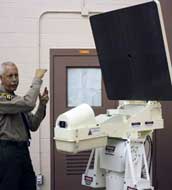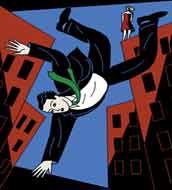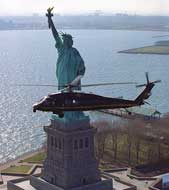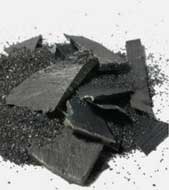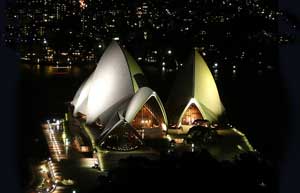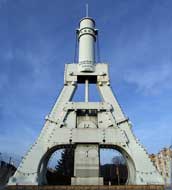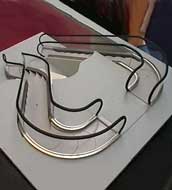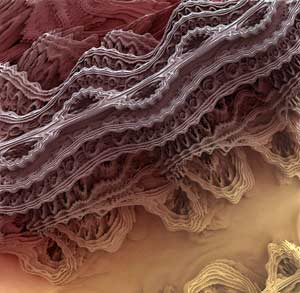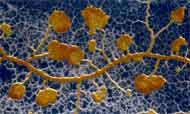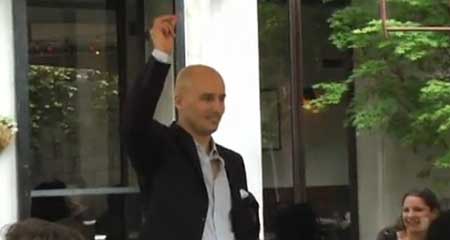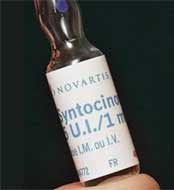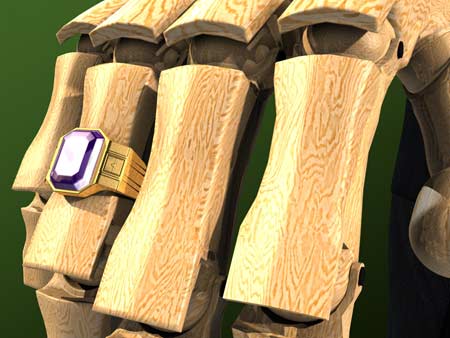Courthouses and airport security checkpoints aren’t the only places where backscatter x-ray vision is being deployed. The same technology, capable of seeing through clothes and walls, has also been rolling out on US streets. American Science & Engineering, a company based in Billerica, Massachusetts, has sold US and foreign government agencies more than 500 backscatter x-ray scanners mounted in vans that can be driven past neighbouring vehicles to see their contents. Law enforcement agencies have deployed the vans to search for vehicle-based bombs. The Z Backscatter Vans, or ZBVs, as the company calls them, bounce a narrow stream of x-rays off and through nearby objects, and read which ones come back. Absorbed rays indicate dense material such as steel. Scattered rays indicate less-dense objects that can include explosives, drugs, or human bodies. The systems “to a large degree will penetrate clothing” and potentially violate the fourth amendment. “Without a warrant, the government doesn’t have a right to peer beneath your clothes without probable cause.” Nevertheless, that doesn’t seem to have stopped them from being used.
I’ve always resented the smug statements of politicians, media commentators, and corporate executives who talk about how, in America, if you work hard,
you would become rich. The meaning of that was: if you were poor, it was because you hadn’t worked hard enough. I knew this was a lie.
Unmannered Intrusions
Dec. 15, 2010
| If inmates of the Pitchess Detention Center get out of line, they may get blasted with an invisible heat ray. The jail’s energy weapon is a small-scale version of the Active Denial System, an experimental crowd control device that the US military brought to Afghanistan — and then quickly shipped back home, after questions mounted about the wisdom of blasting locals with a beam that momentarily puts them in agony. The pain weapon seemed at odds with the military’s efforts to appear more humane and measured in the eyes of the Afghan populace. But being humane is not required for prisoners, I guess. The Los Angeles County Sheriff’s Department (LASD) said people at Raytheon (maker of the device) were reeling from the short-sided, self-serving cowardice of people who were more interested in saving face than saving lives,” said a former LASD Commander. The LASD has long been a hotbed of advocates for exotic weaponry and the Active Denial System is the “Holy Grail of crowd control.” With a range of 80 to 100 feet, the heat beam can blast prisoners that a Taser couldn’t hit, instantly causing intense pain. “We accepted a risk the Department of Defense refused — even after they spent $40 million of the taxpayers money and even while they’re killing people because [they] are unwilling to use it.” Eyes could be permanently damaged — especially if the person hit is wearing contacts — and body piercing, tattoos, or jewelry could cause serious skin damage. (To be fair, other crowd control methods — including tear gas, water cannons slippery foam and rubber bullets — carry implicit dangers of injury or accidental death, and often leave residue or residual material.) A lower threshold of use may lead those who use them (especially civilian police) to become “trigger-happy”, even when dealing with peaceful protesters. Others focus on concerns that weapons whose operative principle is that of inflicting pain might be useful for such purposes as torture, as they leave no evidence of use, but have the capacity to inflict horrific pain on a restrained subject. |
||
| The paradox of power: the very traits that help leaders accumulate control in the first place all but disappear once they rise to power. Instead of being polite, honest and outgoing, they become impulsive, reckless and rude. In some cases, these new habits can help a leader be more decisive and single-minded, or more likely to make choices that will be profitable regardless of their popularity. One recent study found that overconfident CEOs were more likely to pursue innovation and take their companies in new technological directions. Unchecked, however, these instincts can lead to a big fall. Why does power lead people to flirt with interns, solicit bribes, and fudge financial documents? According to psychologists, one of the main problems with authority is that it makes us less sympathetic to the concerns and emotions of others. For instance, several studies have found that people in positions of authority are more likely to rely on stereotypes and generalisations when judging other people. They also spend much less time making eye contact, at least when a person without power is talking. The best treatment is transparency. The worst abuses of power can be prevented when people know they’re being monitored. However, people in power reliably overestimate their moral virtue, which leads them to stifle oversight. They lobby against regulators and fill corporate boards with friends. The end result is often power at its most dangerous. (Tell me again — which countries refused to be governed by the International Criminal Court? 35 countries, including Russia and the United States have signed but not ratified it. A number of states, including China and India are critical of the court and have not signed up. The ICC can generally exercise jurisdiction only in cases where the accused is a national of a state party, the alleged crime took place on the territory of a state party, or a situation is referred to the court by the United Nations Security Council. The court can exercise its jurisdiction only when national courts are unwilling or unable to investigate or prosecute such crimes.) |
||
| The "war on terror" is about creating terrorists. The US government desperately needs real terrorists in order to justify expansion of its wars against Muslim countries and to keep the American people sufficiently fearful that they continue to accept the police state that provides “security from terrorists,” but not from a government that has discarded civil liberties. The US government creates terrorists by invading Muslim countries, wrecking infrastructure, and killing vast numbers of civilians. The US also creates terrorists by installing puppet governments to rule over Muslims, using them to kill and persecute citizens as is occurring on a growing scale in Pakistan today. Wars are good for profits for the military/security complex, about which President Eisenhower warned more than 50 years ago. American hegemony is good for the oil industry’s control over resources and resource flows. The transformation of the Middle East into a vast American puppet state serves well Israel Zionist aspirations for territorial expansion. Most Americans believe their government is the best on Earth, that it is morally motivated to help others and to do good, that it rushes aid to countries where there is famine and natural catastrophes. Most believe that their presidents tell the truth (except maybe about their sexual affairs). The persistence of these delusions is extraordinary in the face of daily headlines that report US government bullying of, and interference with, virtually every country. |
||
| Thorium is a silvery-white metal which is air-stable and retains luster for several months. When contaminated with oxide, thorium slowly tarnishes in air, becoming gray and finally black. It’s a chemical element, symbol Th, atomic number 90, naturally occurring, slightly radioactive. A Thorium atom has 90 protons and 90 electrons. It decays slowly by emitting an alpha particle; the half-life of thorium-232 is 14 billion years. Thorium is estimated to be 3 — 4 times more abundant than uranium. It’s a by-product of the extraction of rare earths from monazite sands and was used for breeding the nuclear fuel uranium (233) in a molten-salt reactor experiment from 1964 to 1969. Russia, India and other countries are reconsidering it with the possibility of starting a thorium fuel cycle for production of nuclear power. When heated in air, thorium turnings ignite and burn brilliantly with a white light. It has the largest liquid range of any element: 2,946°C between melting and boiling. Thorium is part of the magnesium alloy called Mag-Thor, used in aircraft engines to impart high strength and creep resistance at high temperatures. Thorium dioxide is used in heat-resistant ceramics, for example for high-temperature laboratory crucibles. When added to glass, it increases refractive index. Such glass is used for high-quality camera and scientific instrument lenses. A thorium fuel cycle offers many potential advantages over uranium including greater abundance on Earth, superior physical and nuclear properties, enhanced proliferation resistance, and reduced nuclear waste production. A ton of thorium produces as much energy as 200 tons of uranium, or 3,500,000 tons of coal. With a thorium nuclear reactor there’s no possibility of meltdown; it generates power inexpensively; it doesn’t produce weapons-grade by-products; it will burn up existing high-level waste as well as nuclear weapon stockpiles. There is enough thorium in the US alone to power the country at its current energy level for over 1,000 years. Australia, India, and the US have 2/3 of the world’s known reserves, though it is thought Brazil and Turkey may have even more than that. |
||
A Cadillac for the Future
For the 100th anniversary of Cadillac, Loren Kulesas has designed a car built to last another 100 years (while keeping the same fuel source the whole time). The car is designed for beauty, sustainability, and social influence (though not, perhaps, to meet all existing safety laws). There are redundancies built for all the major systems of the vehicle so even if something were to fail, the vehicle would continue to function. This is why there are 24 wheels with individual internal induction motors. The vehicle would require the tires to be adjusted every 5 years, but no material would need to be added or subtracted. The angle of the wheels to the contact surface of the road automatically adjusts according to the movement of the vehicle, maximising energy used to power it. When discussing the safety of actiniod fuel sources it is important to consider the annual US health bill that results from the burning of hydrocarbon fuel. (That sounds a bit negative.) The surplus power generated from the vehicle’s Thorium reactor can be used to give back to the grid, power a neighbourhood, or recharge other electric battery-equipped devices. Designed with safety in mind, the reactor has multiple scuttle devices to poison the sub-critical reaction in case of extreme abuse. The reactor’s exterior is designed to withstand all unauthorised or accidental tampering.
| When everyone tries to pay down debt at the same time, the result is a depressed economy and falling inflation, which cause the ratio of debt to income to rise (if anything). That is, we’re living in a world in which the twin paradoxes of thrift and deleveraging exist, in which individual virtue ends up being collective vice. So what will happen? In the end, what must happen is an effective default on a significant part of debt, one way or another. The default could be implicit, via a period of moderate inflation that reduces the real burden (that’s how World War II cured the Depression). Or, if not, there could be a gradual, painful process of individual defaults and bankruptcies, which ends up reducing overall debt. Basically, this can be done cleanly or it can be ugly. And ugly is the way things are going. |
||
| Scientists have identified a way that the United States could immediately save the energy equivalent of about 350 million barrels of oil a year — without spending a penny or putting a ding in the quality of life: just stop wasting food. It takes the equivalent of about 1.4 billion barrels of oil to produce, package, prepare, preserve and distribute a year’s worth of food in the US. Estimates indicate that between 8 and 16% of energy consumption in the US went toward food production in 2007. Despite this large energy investment, the Department of Agriculture estimates that Americans waste about 27% of their food. This waste represents a largely unrecognised opportunity to conserve energy and help control global warming — 2% of the annual energy consumption in the US. Okay, what counts as “waste”? Watermelon rind? (Is it wasted if you don’t pickle it?) Orange peel? (Must it be dried and ground and used in cakes?) Mouldy bread? (Make your own penicillin?) Some waste is unavoidable. Buying prepared food could reduce food waste while increasing packaging waste. This supposed scientific study isn’t much different than mom telling everyone to clean their plates. |
||
| British Airways Flight 9 regularly flew from London Heathrow to Auckland, with stops in Bombay, Madras, Kuala Lumpur, Perth, and Melbourne. On 24 June 1982, the route was flown by a 747, the City of Edinburgh. This time, it flew into a cloud of volcanic ash thrown up by the eruption of Indonesian volcano Mount Galunggung, resulting in the failure of all 4 engines. The reason wasn’t immediately apparent to crew or ground control. Without engine thrust, a 747-200 has a glide ratio of 15:1, meaning it can glide forward 15 kilometres for every one it drops. The flight crew determined that the aircraft was capable of gliding for 23 minutes, covering 91 nautical miles. Captain Eric Moody made an announcement to the passengers that has been described as a masterpiece of understatement: “Ladies and gentlemen, this is your captain speaking. We have a small problem. All 4 engines have stopped. We are doing our damnedest to get them under control. I trust you are not in too much distress.” The aircraft diverted to Jakarta in hopes one or more engines could be restarted to allow it to reach there and land. It was able to glide far enough to exit the ash cloud and all engines were restarted (although one failed again soon after). Ash had sandblasted the windscreen and, as the plane approached Jakarta, the crew found it impossible to see. They decided to fly the Instrument Landing System, but found their glideslope was inoperative. So the first officer monitored the airport’s Distance Measuring Equipment and called out how high they should be at each step along the final track to the runway, creating a virtual glideslope for them to follow. It was, in Moody’s words, “a bit like negotiating one’s way up a badger’s arse”. After landing, the flight crew found it impossible to taxi, due to glare from apron floodlights which made the sandblasted windscreen completely opaque. But they made it safely. (The airplane had to be rebuilt.) 200 of the 240 passengers and crew have remained in touch for more than 25 years. |
||
| Air Transat Flight 236 was an Air Transat route between Toronto, Canada and Lisbon, Portugal flown by Captain Robert Piché and First Officer Dirk DeJager. On 24 August 2001, the flight ran out of fuel over the Atlantic Ocean with 293 passengers and 13 crew aboard. Unknown to the pilots, the aircraft had developed a leak in a fuel line to its right engine. During the flight, pilots noticed a fuel imbalance between the left and right fuel tanks and attempted to remedy this by opening a cross-feed valve between the tanks, causing fuel from the operational tank to be wasted through the leak on the other side. Without fuel, an aircraft’s engines cannot provide thrust or electrical power. On the Airbus A330, as with most large modern passenger aircraft, an emergency ram air turbine is deployed automatically to provide essential power for sensors and instruments to fly the aircraft. When the engines suffered a flame out, important systems became unavailable — specifically, the aircraft lost its main hydraulic power which operates the flaps, brakes, and spoilers. Additionally, without operating engines, it couldn’t use thrust reversers to slow the plane after touchdown. The pilots were able to glide to a landing at Lajes Air Base, Terceira Island in the Azores. Landing speed was about 200 knots (370 kilometres per hour), much higher than the normal speed of 130 to 145 knots — but there were no fatalities, only minor injuries. It was discovered that an incorrect part was installed in the hydraulics system by Air Transat maintenance staff. The skill of the pilots and of the military Air Traffic Controller — 1st Sargeant José Ramos — allowed the flight to land safely without fuel, causing only minor injuries to passengers and minor damage to the airplane, which is still in service.) If you like reading about this kind of stuff, you can also see the story of The Gimli Glider. |
||
Light Show
In the middle of a desert, a military helicopter creates a stunning show while initiating a static electrical discharge due to the sand in the air.
| Three great Astronomy Photos of the Day… |
||
| An unusually active lightning storm was recorded over Athens, Greece in July. |
||
| American landscape painter Frederic Church saw a spectacular string of fireball meteors cross the Catskill evening sky, an extremely rare Earth-grazing meteor procession which he captured on canvas. From New York City, poet Walt Whitman saw the same thing, which he wrote a poem about. Nor the comet that came unannounced, out of the north, flaring in heaven, And later: |
||
Sometimes the Sky Itself Is the Best Show in Town
On 26 January 2007 people from Perth, Australia gathered on a local beach to watch a sky light up with delights near and far. Nearby, fireworks exploded as part of Australia Day celebrations. On the far right, lightning from a thunderstorm flashed in the distance. Near the image centre, seen through clouds, was the most unusual sight of all: Comet McNaught.
| The roll cloud is a subtype of arcus cloud — the funnel is horizontal and does not connect to the ground. The other subtype of arcus is a shelf cloud, which also often appears to precede storm fronts. These rare long clouds sometimes form near advancing cold fronts. A downdraft from an advancing storm can cause moist warm air to rise, cool below its dew point, and so form a cloud. When this happens uniformly along an extended front, a roll cloud may form. Just remember not to fly through them. |
||
| The Vatopaidi monastery, along with 19 others, was built in the 10th century on a 37-mile-long-by-6-mile-wide peninsula in northeast Greece, called Mount Athos. Mount Athos is now severed from the mainland by a long fence and so the only way onto it is by boat. This gives the peninsula the flavour of an island. And on this island no women are allowed — no female animals of any kind, in fact, except for cats. The official history ascribes the ban to the desire of the church to honour the Virgin; the unofficial one is that it addresses the problem of monks hitting on female visitors. The ban has stood for 1,000 years. The ferry chugs for 3 hours along a rocky, wooded, but otherwise barren coastline, stopping along the way to drop monks and pilgrims and guest workers at other monasteries. The sight of the first monastery looks less like a a building and more like a spectacle: it’s as if someone has taken Assisi or Todi or one of the other old central-Italian hill towns and plopped it down on the beach, in the middle of nowhere. Unless one knows what to expect on Mount Athos — it has been regarded by the Eastern Orthodox Church for more than a millennium as the holiest place on Earth, and it enjoyed for much of that time a symbiotic relationship with Byzantine emperors — these places come as a shock. There’s nothing modest about them; they are grand and complicated and ornate and obviously in some sort of competition with one another. In the old days, pirates routinely plundered them, and you can see why: it would be almost shameful not to, for a pirate. (This is taken from an in-depth Vanity Fair article on what went wrong in Greece.) |
||
The Opera House Everyone Can Recognise
The Sydney Opera House is situated on Bennelong Point in Sydney Harbour, close to the Harbour Bridge at the northeastern tip of the central business district; it is surrounded by water on 3 sides. Work began early, in March 1959, for fear that funding or public opinion might turn against the project. However, architect Jørn Utzon’s final design was still uncompleted as major structural issues were unresolved. By 23 January 1961, work was 47 weeks behind, mainly due to the unexpected: inclement weather, difficulty diverting stormwater, construction beginning before proper drawings were prepared, contract document changes. Work on the podium completed February 1963 — but the forced early start led to significant later problems, not least of which was the discovery that the podium columns were not strong enough to support the roof structure. They had to be re-built. The major hall, originally to be a multipurpose opera/concert hall, became solely a concert hall. The minor hall, originally for stage productions only, had the added function of opera and ballet to deal with and is called the Opera Theatre. It is unfortunately inadequate to stage large-scale opera and ballet. A theatre, a cinema and a library were added but later changed to two live drama theatres and a smaller theatre “in the round”. These now comprise the Drama Theatre, the Playhouse, and the Studio, respectively. These changes were primarily due to inadequacies in the original competition brief, which did not make it clear how the Opera House was to be used. The interior layout was changed, meaning the stage machinery, already designed and fitted inside the major hall, was pulled out and largely thrown away. Utzon’s plywood corridor designs and acoustic and seating designs for the interior of both major halls were scrapped completely. The design for the Concert Hall was rejected as it only seated 2,000 and more was needed. The subsequent outside consultant versions of both major halls have problems with acoustics, particularly for the performing musicians. The orchestra pit in the Opera Theatre is cramped — and dangerous to musicians’ hearing. The Concert Hall has a very high roof, leading to a lack of early reflections onstage — perspex rings (the “acoustic clouds”) hanging over the stage were added shortly before opening in an (unsuccessful) attempt to fix this. Nevertheless, as recipient of the Pritzker Prize, the Opera House is considered one of the great iconic buildings of the 20th century.
| The Creusot steam hammer was a giant steam hammer built in 1877 by Schneider and Company in the French industrial town of Le Creusot. With the ability to deliver a blow of up to 100 tons, the Creusot hammer was the most powerful in the world until 1891, when the Bethlehem Iron Company of the United States purchased patent rights from Schneider and built a steam hammer of almost identical design but capable of delivering a 125-ton blow. The Creusot hammer still exists, although it is no longer operational, and is a tourist attraction in the town where it was built. With few remaining rivals, the hammer today is once again the largest of its kind in the world. The anvil weighs a massive 750 tons; in order to support the weight and the hammer blows, the machine’s foundations are solid masonry resting on bedrock 11 metres below the soil. A 1-metre thick bed of oak timber tops the masonry foundation and provides the immediate floor for the giant anvil. Four separate furnaces provided steam power to 4 adjacent swan-necked cranes used for manipulating the massive 120-ton iron and steel ingots delivered to the hammer for forging. Six Bessemer converters supplied the steel for the ingots, which were transported on a railway line built expressly for the purpose through the works. In its heyday, the hammer would sometimes give public demonstrations of its accuracy. It could be used to cork a bottle, crack a nut without damaging the contents, or tap a watch glass without breaking it. With such demonstrations, steam hammers for a time became symbols of industrial precision. |
||
| A system known as the “Levytator” has been developed by Jack Levy, an Emeritus Professor of Mechanical Engineering at City University London. Unlike traditional designs, where redundant steps move underneath those in use, the Levytator utilises a continuous loop of curved modules, which can follow any path upwards, flatten and straighten out, and descend once more, all with passengers onboard. The system can be arranged in any configuration — as a DNA-esque double helix in a science museum, for example — and also offers several practical advantages at a cost that is similar to a conventional unit. “As all of the steps can be accessed from above, maintenance can be carried out much more easily,” says Levy. “It also means that no excavation is required when installing the Levytator. This could be particularly useful in the heritage sector, where the system could be placed on top of a grand staircase in a listed stately home, providing better access for elderly and disabled visitors, but not destroying the fabric of the building.” The Levytator opens up new possibilities for architects in hotel, airport, museum, theme park and commercial building design and it can carry twice as many people as a traditional escalator, but at a comparable price. Video. |
||
3D Fractals
The formulae for “good” 3D fractals was elusive for years — until someone finally hit the “sweet spot” of the power of 8.
Some of the results look like a rococo combination of lace, wedding cake frosting, and broccoli.
| Have you ever noticed that when you have a bowl of nuts, the bigger ones make their way to the top? This event actually has a scientific name: the Brazil Nut Effect. The term refers to the phenomenon in which the largest particles end up on the surface when a granular material containing a mixture of objects of different sizes is shaken. Another random bit of trivia: the Phd is not the highest degree a person can receive. There is also a Doctor of Sciences (DSc/ScD) and Doctor of Letters (DLitt/LittD) which is normally awarded in Britain, Ireland, and the commonwealth nations (it’s awarded in the US, but there it is equivalent to a PhD, not higher than one). It is normally awarded for a substantial and sustained contribution to the art to which it applies — for example science and literature. Mark Twain was awarded a Doctor of Letters by Oxford University. Just to add to the confusion, there is also a PhB which is a bachelor of philosophy, equal to a Masters degree despite its name. And finally: Have you noticed that some people seem to have very appropriate (and entirely coincidental) names that correspond to their professions? For example, Usain Bolt is a Jamaican sprinter; Lord Brain is a brain surgeon; Alto Reed is a saxophonist. This is called an “aptronym” as in “aptly named”. Some people believe that the name can influence life decisions leading a person to work in a field relating to his/her name. This is called nominative determinism. At some point in the past, people took their names from what they did (Cooper, Goldsmith, Farmer and the like). Since the family business could span generations, many times people would be born with aptronymic names. |
||
| It helps to know how many people would have died from flu in an average year if you want to put the swine flu pandemic in perspective. In 1999, the CDC calculated 36,000 deaths per year in the US. However a new analysis of the past 31 flu seasons puts the yearly average at 23,607. But if you were to look at just the past 10 seasons, the average per year is higher at 32,743. In some years as few as 3,349 have died (back in 1986 — 1987). But the highest annual average toll was 48,614, just 7 seasons ago (2003 — 2004). The reason for the wide variation: deaths peak when the H3N2 strain of influenza A dominates. When it’s H1N1 or influenza B, the toll is quite a bit lower. Scientists guess which strain may predominate in a given year, but it’s only a guess. That’s why the flu vaccine doesn’t work in some years. |
||
Aseroe rubra
Starfish fungus or sea anemone fungus is a member of the stinkhorn family. Stinkhorns (so named due to an evil-smelling brown-green slime in the centre) develop and fade quickly. This is good, because it has a very unpleasant odour, like rotting meat, to attract flies (which then spread the spores). It is not only widespread throughout the South Pacific (including Australia and New Zealand), it is also the most common stinkhorn in Hawaii. It apparently can also be found in southeastern North America.
| While antibiotics have done immeasurable good, saving millions of lives, they’re a double-edged sword. Events unfolding in emergency rooms across the globe were inevitable from the moment the first dose of penicillin went on sale. Microbes, with short lifespans and fast breeding rates, evolve at supersonic speeds compared to long-lived slow-breeding Homo sapiens. Bacteria have another trick, one central to the greatest medical threat man has faced since the development of antibiotics. Bacteria swap gene segments. Add one more factor: in many countries, antibiotics are dispensed over the counter. A physician prescribes an antibiotic and a course of treatment — a specific number of pills the patient must take, even after immediate presenting symptoms vanish. This ensures the patient is cleared of all bacteria. Self-medicating patients often stop when symptoms disappear. This may seem rational, but the body is left with those few bacteria most resistant to the drug. When large numbers of people do this, antibiotic-resistant bacteria arise and quickly spread. What to do? Don’t pressure your doctor for antibiotics; use the ones you have properly; avoid infection by washing your hands. Bacteria resistant to nearly all antibiotics are popping up all over the world. Furthermore, humans and other animals have a symbiotic relationship with bacteria. Microbes in the intestines help digest food and “good” germs take up space and keep bad germs away. The human distal gut is one of the most complex ecosystems on the planet. Gut microbes can affect obesity and may play a role in allergy. Lactobacillus reuteri, found in breast milk, may protect against rotavirus infections. Certain bacteria cause inflammations affecting appetite as well as inflammatory bowel conditions like Crohn’s disease and colitis. Regularly wiping out the body’s bacterial population helps drive rapid spread of drug-resistant superbugs. Every course of antibiotics represents a roll of the dice – potentially a “bad” strain will replace a killed beneficial species. |
||
| The slime mould Physarum polycephalum spends most of its life as a yellow mat, sliding among leaf litter in its search for food, such as bacteria and fungal spores. This mat is a gigantic single cell, called a plasmodium, which forages by sending out dozens of tendrils from a central mass. The branches of this living network grow and shrink, emerge and vanish, according to what they encounter. Without a brain, Physarum makes decisions by committee. The plasmodium is a single sac but it behaves like a colony. Every part rhythmically expands and contracts, pushing around the fluid inside. If one part of the plasmodium touches something attractive, like food, it pulses more quickly and widens. If another part meets something repulsive, like light, it pulses more slowly and shrinks. By adding up all of these effects, the plasmodium flows in the best possible direction (presumably) without a single conscious thought. It is the ultimate in crowdsourcing. Despite its lack of a nervous system, it can solve problems such as mazes, finding the shortest path between two exits baited with food. At first, it extends its tendril network throughout the entire labyrinth before trimming away the dead-end branches, leaving behind a single thick tube that covers the most direct path. If parts of the maze are bathed in unpleasant bursts of light, Physarum will find an alternative route that sticks to the shadows. It is a living computer, driven by a massively parallel core processor and controlled by food or light. These properties can integrate the slime mould into machines. When grown in the shape of a 6-pointed star, one has been used to control a 6-legged robot by using beams of light. Moulds have been used as sensors to sniff out chemicals, engines to drive miniature boats with rhythmic pulses, or conveyor belts to transport liquids and small particles. They are like a team of employees working together for the common good without direction of a manager. Despite no central intelligence, they still produce efficient behaviour (better than many governments). |
||
34-year-old Michael arranged to "stop time" at a New York City restaurant so he could propose to his fiance, Nadia. Nadia is lured to Loreley Restaurant & Biergarten on Rivington Street in Manhattan’s lower east side under the impression she is there to be interviewed for a runner’s magazine article. Unbeknownst to her, she is dining on a patio full of eager participants posing as patrons. Michael enters, snaps his fingers, and freezes time. Creativity and ingenuity make all the difference in a marriage proposal — guys, take note.
| Scientists have found that oxytocin improve powers of empathy — but only among those who are less socially proficient in the first place. The more socially comfortable participants perform well on empathetic tasks regardless of whether they are on oxytocin or a placebo. But less socially proficient participants perform significantly better on oxytocin, with their empathetic powers performing identically to that of more outgoing participants. These results highlight the potential oxytocin holds for treating social deficits in people with disorders in social functioning such as autism. This means that, during the period of being “in love”, people with autism may seem normal. Only after a couple of years, when the relationship settles into “everyday mode”, would the socially comfortable half of the pair discover that his/her partner was considerably different than what had been assumed. |
||
| “At least twice a week I ride Amtrak’s high-speed Acela train from my home in New York City to my teaching job in Providence, Rhode Island. I can’t avoid being aware of an obvious, disquieting truth. Almost invariably, after I have hustled aboard early and occupied one half of a vacant double seat in the usually crowded quiet car, the empty place next to me will remain empty for the entire trip. I’m a man of colour, one of the few on the train and often the only one in the quiet car, and I’ve concluded that colour explains a lot about my experience. Unless the car is nearly full, colour will determine, even if it doesn’t exactly clarify, why 9 times out of 10 people will shun a free seat if it means sitting beside me. Giving them and myself the benefit of the doubt, I can rule out excessive body odour or bad breath; a hateful, intimidating scowl; hip-hop clothing; or a hideous deformity as possible objections to my person. Considering also the cost of a ticket, the fact that I display no visible indications of religious preference and, finally, the numerous external signs of middle-class membership I share with the majority of the passengers, colour appears to be a sufficient reason for the behaviour I have recorded. I can’t accept the bounty of an extra seat without remembering why it’s empty, without wondering if its emptiness isn’t something quite sad. And quite dangerous, also, if left unexamined. Posters in the train, the station, the subway warn: if you see something, say something.” [And I think he says it rather well.] | ||
| A woman having an hourglass-shaped figure is more important for a man than her breast size or facial features. Men take only a split second to decide if a member of the opposite sex is attractive. A man is more attracted to a woman based on the size of her waist compared with her hips. A “waist-to-hip ratio” of 0.7 or a waist measuring 70% of the hip circumference is the “perfect” size. Women with figures like Marilyn Monroe, Hollywood actress Jessica Alba, and Alessandra Ambrosio, Victoria’s Secret model, were found to posses the “perfect” body. Scientists concluded that such a small ratio was considered good for a woman’s health and resulted in high fertility. Despite most men being drawn initially to the woman’s cleavage, it was her hips and waist that were in fact what they found most attractive. It is all about the distribution of fat which is directly linked to fertility. “Humans simply do not mate randomly.” |
||
| James D French (around 1936 — 10 August 1966) was an American criminal who was the last person executed under Oklahoma’s death penalty laws prior to Furman versus Georgia. He was also the only prisoner executed in the United States in that year. Already in prison for life, but allegedly afraid to commit suicide, French murdered his cellmate, apparently to compel the state to execute him. French has been attributed with famous last words before his death by electric chair: “How’s this for a headline? 'French Fries’” |
||
| A species is the basic category of biological classification; it’s a group of organisms that differ from all other groups of organisms that are capable of breeding and producing fertile offspring. A male donkey (Equus africanus asinus) and a female horse (Equus ferus caballus) can mate but the offspring, a mule, is infertile, so a mule is not a species. A tigon is a cross between a male tiger (Panthera tigris) and a female lioness (Panthera leo); it is infertile and thus not a species. The liger is a hybrid cross between a male lion (Panthera leo) and a tigress (Panthera tigris), hence it has parents with the same genus but of different species. It is the largest of all known cats and extant felines. Ligers inherit characteristics from both species. They enjoy swimming which is a characteristic of tigers and are very sociable like lions, but unlike tiglons, they are more likely to live past birth. However ligers may inherit health issues or behavioural issues due to conflicting inherited traits, but this depends on the genetic traits of the parents. Ligers exist only in captivity because the parental species do not overlap naturally in range. Oddly, ligers typically grow as large as both parents put together. Hercules is the largest non-obese liger (there are only 10 surviving adults known worldwide). Jungle Island, an interactive animal theme park in Miami, is home to Hercules, who is recognised by the Guinness Book of World Records as the largest living cat on Earth, weighing in at over 410 kilograms (904 pounds). |
||
| This is an impressive performance by a dog and I mean a REALLY impressive performance. Via Pharyngula. |
||
Smelling Is a Bee’s Job, after All
While bees are extremely important to our ecology, they are becoming important in the area of defence against biological and other weapons. The bee’s discreet sense of smell, equivalent to a dog’s, can be utilised in a much cheaper way to detect various environmental odours. A bee naturally extends its proboscis when encountering a desirable odour, anticipating the taste of a flower. But bees used in a 1999 Defense Advanced Research Projects Agency experiment were trained via classical Pavlovian conditioning to respond to the odour of explosives instead. Safely detecting buried landmines would allow thousands of acres of land to be productively farmed without danger. The bees’ reward, when they respond with a Proboscis Extension Reflex (PER), is a taste of sweet syrup. Trainers attach small diodes onto the backs of trained bees and used handheld radar tracking devices to chart where the bees go. The bee’s response translates into an electronic response via the hand-held trace vapour detection unit called Vasor 136, a sensing instrument developed by Inscentanila. It contains 36 cartridges, each holding one bee. Filtered in by a standard gas mask cartridge is a constant supply of clean air. When an operator presses a button, an air sample is taken from the environment that exposes each bee to ambient, unfiltered air. If any have been trained to respond to a vapour in that air sample, it exhibits a PER response, which is translated into a result shown on the operator’s PDA display. Each cartridge can contain a bee that has been trained to identify a unique vapour — up to 36 different scents are detectable by a single unit. Bees can also identify diseases and cancers in people and animals, detect rapidly spreading bacteria in food, and identify dry rot in buildings.
This is Manny the Magician’s secret: his magic ring. No one knows where he acquired it — but no one remembers ever seeing him without it.
We’re going live any day. Drop by to see if we’ve opened and take one of our tours!
Cosmo Theatre – brought to you by Thaumaturgy Studios, Ltd live from the Southern Hemisphere
 Animals
Animals Animation
Animation Art of Playing Cards
Art of Playing Cards Drugs
Drugs Education
Education Environment
Environment Flying
Flying History
History Humour
Humour Immigration
Immigration Info/Tech
Info/Tech Intellectual/Entertaining
Intellectual/Entertaining Lifestyles
Lifestyles Men
Men Money/Politics/Law
Money/Politics/Law New Jersey
New Jersey Odds and Oddities
Odds and Oddities Older & Under
Older & Under Photography
Photography Prisons
Prisons Relationships
Relationships Science
Science Social/Cultural
Social/Cultural Terrorism
Terrorism Wellington
Wellington Working
Working Zero Return Investment
Zero Return Investment

